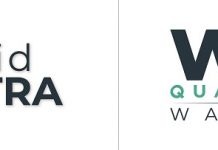Commercial viability of chemical products is dependent on regulatory compliance, the costs of which can be considerable. Spending on compliance can be optimised to deliver safe products and efficient business practises.
Targeted and strategic regulatory compliance offers a competitive advantage by optimising data generation and use, which in turn contributes to efficient spending and enhanced product value. Peter Fisk Associates Ltd. (PFA) has many years of experience in providing customised services that are underpinned by excellence in science and regulatory compliance, to meet client-specific requirements.
At the heart of a cost-effective approach to regulatory compliance is the prediction of chemical properties to minimise testing costs. As the starting point, to identify where predictions can be implemented, it is necessary to conduct a data gap analysis of the required endpoints based on data requirements. Property areas where predictions can be made include physical chemistry, chemical hazards, toxicology, ecotoxicology and environmental fate.
Under the REACH Regulation, data waivers are allowed for a number of reasons, which are not discussed here. Prediction of a property for REACH is not a waiver, but is a way of meeting the regulatory requirement for data, without testing. This may have technical, financial and ethical advantages.
The mathematical prediction methods known as Quantitative Structure Activity Relationship (QSAR), are a vital part of reduction of testing costs. To meet regulatory requirements, QSARs must be fully-validated and usable as a part of a tiered approach to chemical property prediction. PFA works by using ‘off the shelf’ techniques augmented with project-specific methods developed in-house. These are particularly useful when working on a specific chemical class or category.
Sourcing data to help fulfil the needs in the registration property set (e.g. to generate validated predictions), requires thorough searching of the literature. For example peer-reviewed chemical handbooks including references are reliable sources of physico-chemical property values. In addition, various online databases are available which allow effective searching of peer-reviewed scientific literature. A prospective REACH-registrant must establish legitimate data access where necessary, before using the data in the registration dossier. When existing measured data are not available strategic test-planning can be an effective means to reduce costs. Test planning takes into account the chemical category of a substance and maximises the value of a single study by using it as read-across to other analogous substances. A category approach, and the appropriate use of property prediction within such groups, can be a useful approach to justify and optimise the application of predictive methods and read-across. This kind of approach has the scope to potentially save large amounts of money. PFA can advise on valid use of category approaches and the benefits it can bring.
Property prediction forms a key part of business planning for the evaluation of a product development project. It is possible to predict the likely outcomes of key hazard properties and therefore to profile the substance before a decision to commercialise is made. The history of the chemical industry can show many examples of substances brought to the market that failed simply because they were not sustainable in terms of human health or environmental hazard and risk
PFA offers services in complying with chemical legislation and advice to the chemical industry on the impact of its products and facilities, for human health and the environment. In order to achieve regulatory compliance in a cost-effective manner, an expert approach to the hazard and risk prediction is important. We offer full support in identifying the best strategy for each client and in planning an integrated and robust approach for gap analysis and testing.











